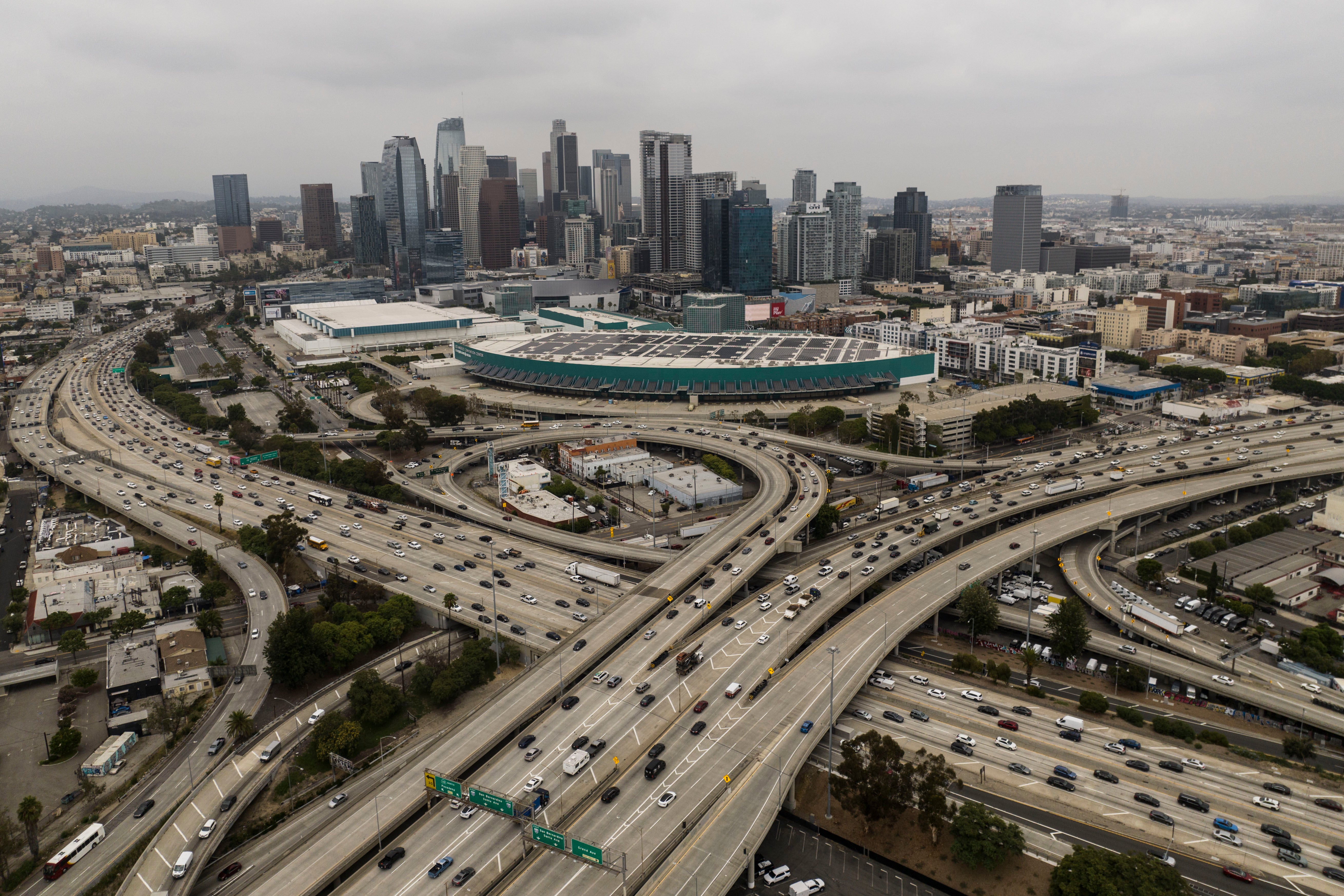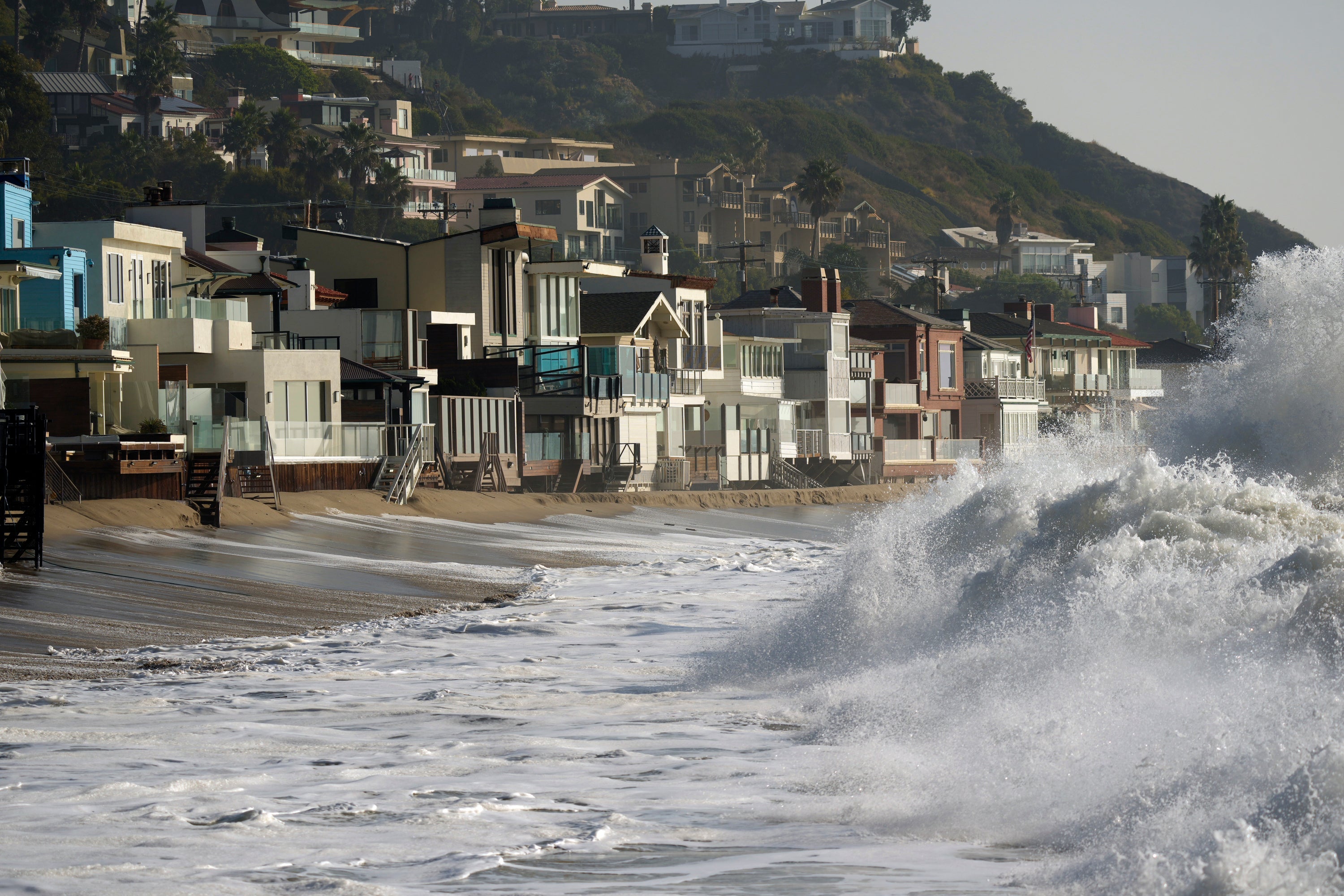A California fault line remains relatively unknown. It caused last week’s quake and might be the site of ‘the big one’
The 10-mile deep Puente Hills thrust fault runs beneath downtown Los Angeles and Orange County – two highly populated areas
Your support helps us to tell the story
From reproductive rights to climate change to Big Tech, The Independent is on the ground when the story is developing. Whether it's investigating the financials of Elon Musk's pro-Trump PAC or producing our latest documentary, 'The A Word', which shines a light on the American women fighting for reproductive rights, we know how important it is to parse out the facts from the messaging.
At such a critical moment in US history, we need reporters on the ground. Your donation allows us to keep sending journalists to speak to both sides of the story.
The Independent is trusted by Americans across the entire political spectrum. And unlike many other quality news outlets, we choose not to lock Americans out of our reporting and analysis with paywalls. We believe quality journalism should be available to everyone, paid for by those who can afford it.
Your support makes all the difference.On Monday, southern California was rattled by a 4.4-magnitude earthquake that was felt all the way from Los Angeles to San Diego. Though no major damage occurred, the quake was caused by a fault line that, though relatively unknown, may prove to be more dangerous than the famous San Andreas Fault.
The Puente Hills thrust fault runs beneath downtown Los Angeles and Orange County – two highly populated areas. The 10-mile deep fault angles like a ramp and gets closest to the surface near the campus of the University of Southern California.
It might all be the site of the next “big one.”
If a quake along the Puente Hills thrust fault hits the loose earth of the Los Angeles Basin, it could amplify the intensity of an earthquake by up to ten times compared to areas on bedrock.
A full fault rupture, estimated to be around a 7.5 magnitude, could kill between 3,000 and 18,000 people, according to US Geological Survey and Southern California Earthquake Center. Up to 735,000 households would be displaced and up to 99,000 tons of debris would be generated.
The center also predicts that such a quake would cause an estimated economic damage to the region of up to $252 billion, making it the costliest disaster in US history.

“It’s a reminder that this is actually our most dangerous fault,” Seismologist Lucy Jones, a Caltech research associate, told The Los Angeles Times.
Major quakes occur along the notorious San Andreas Fault every 180 years or so, though the fault hasn’t had a majorly powerful one since 1906. The fault covers a massive 800-mile stretch, estimates from the earthquake center suggest the fallout from a serious earthquake would still not be as significant as it runs for large sections through sparesly populated desert.
A report from 2008 – co-authored by Jones – estimated that even a magnitude 7.8 quake on the San Andreas Fault would cause fewer fatalities and less economic damage.
Models estimated such an event would cause around 1,800 deaths and $213 billion of economic losses. “These numbers are as low as they are because of aggressive retrofitting programs that have increased the seismic resistance of buildings, highways and lifelines, and economic resiliency,” the report stated.

The Puente Hills thrust fault is the same overall fault network that produced the Whittier Narrows – which measured a 5.9 magnitude, killed eight people and caused some $358 million in damage in 1987.
Monday’s earthquake, centered about 1,100 feet southwest of Huntington Drive and Eastern Avenue, occurred in the same area as a pair of quakes in early June — a magnitude 3.4 on June 2 and a magnitude 2.8 on June 4. Both were associated with the Puente Hills thrust fault system.
It comes in the wake of multiple other earthquakes in Southern California which have occurred in quick succession, including a 3.6 in Ojai on May 31 and two of a similar magnitude under the East Los Angeles area of El Sereno – which can also be attributed to the Puente Hills thrust fault.
The seismic events come amid ongoing speculation over a “big one” – an earthquake with a magnitude of 8.0 or greater. However, prediction, and subsequent preparation, remains difficult.

“Unfortunately, earthquake prediction remains an extremely challenging endeavor,” according to the California Governor’s Office of Emergency Services website. “While scientists can monitor fault lines and detect patterns of seismic activity, they cannot predict exact earthquakes reliably.”
Instead, scientists deal more in the realm of long-term probability, which can inform what high-risk areas can do to prepare for the day when the hard-to-predict prospect of a major quake arrives.
For instance, the US Geological Survey estimates there’s a 72 percent chance a 6.7 or greater magnitude quake will hit the San Francisco Bay Area in the next 30 years.
Until such time as prediction becomes more precise, governments will continue to enact preparedness measures including digital alert systems, practice drills, and building retrofits. Individual citizens are advised to have emergency kits in place and drop to their knees, cover their head and neck, and hold onto something stable when a quake begins.

Join our commenting forum
Join thought-provoking conversations, follow other Independent readers and see their replies
Comments